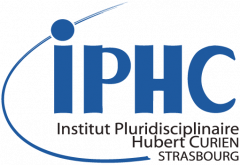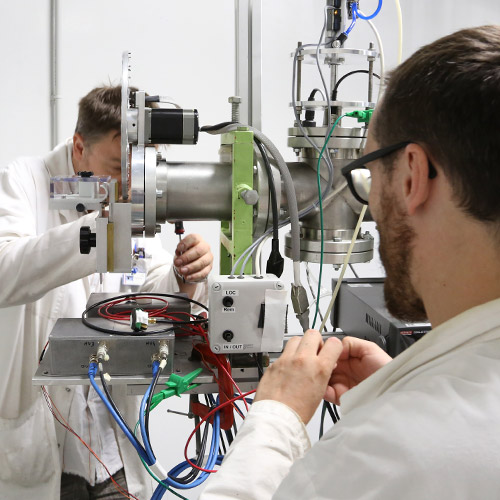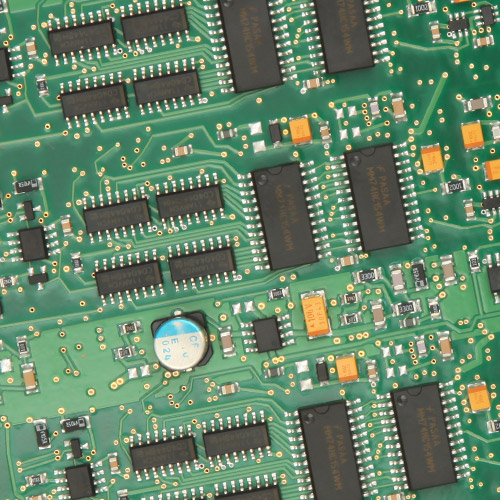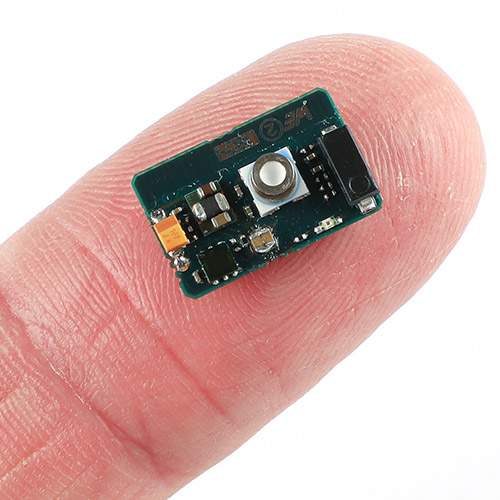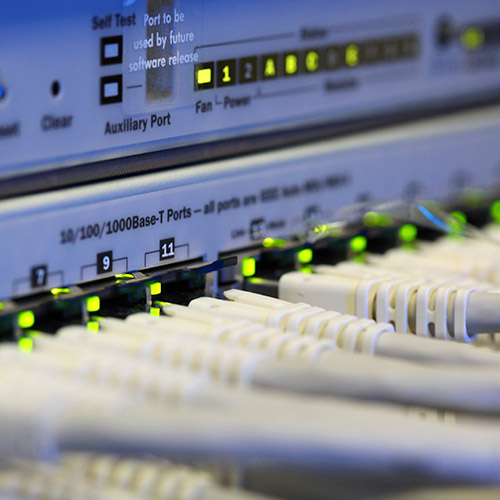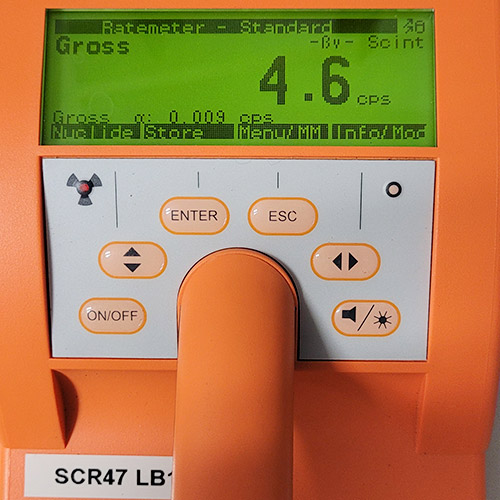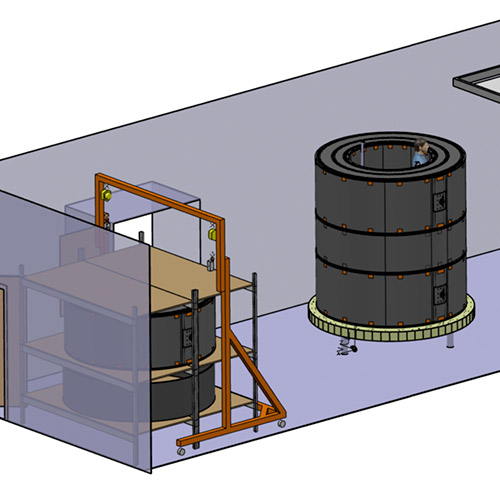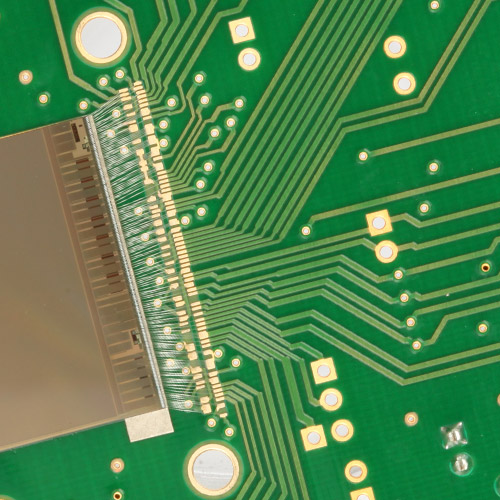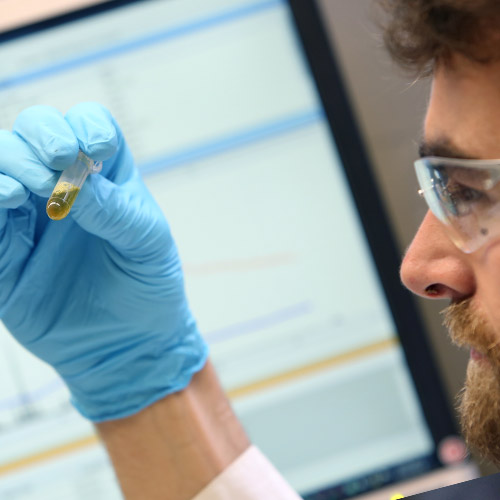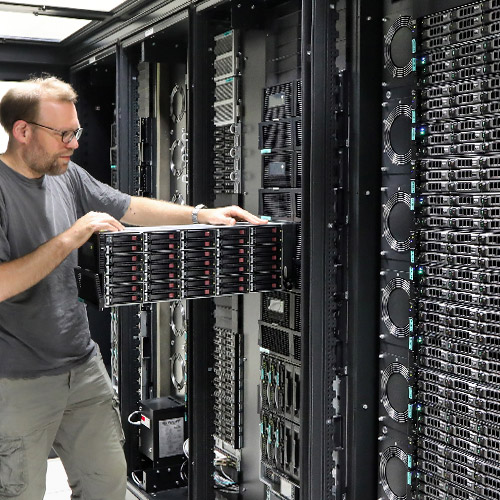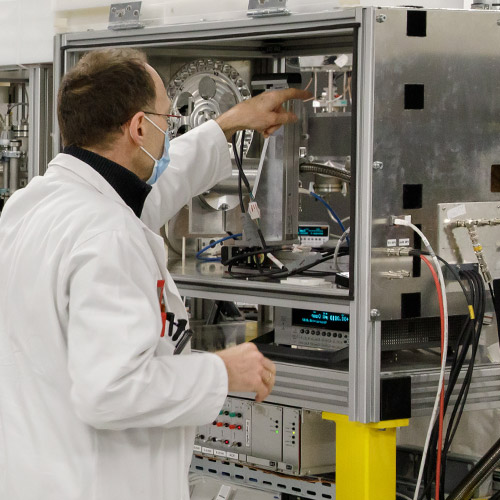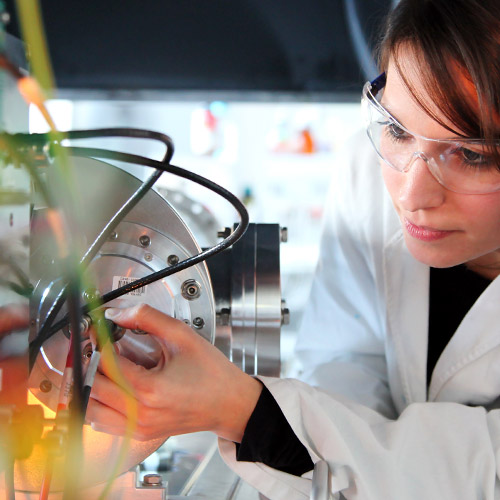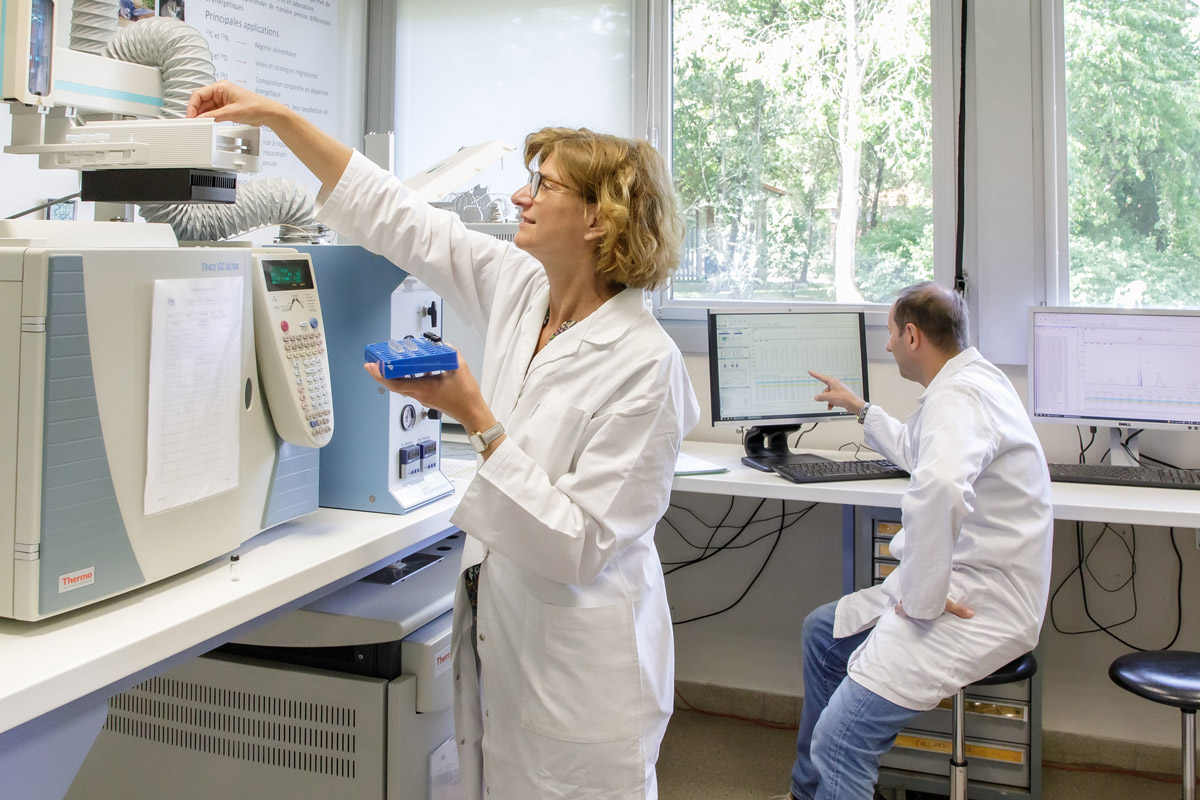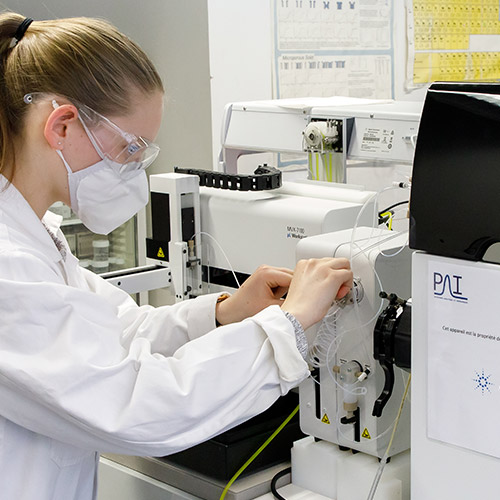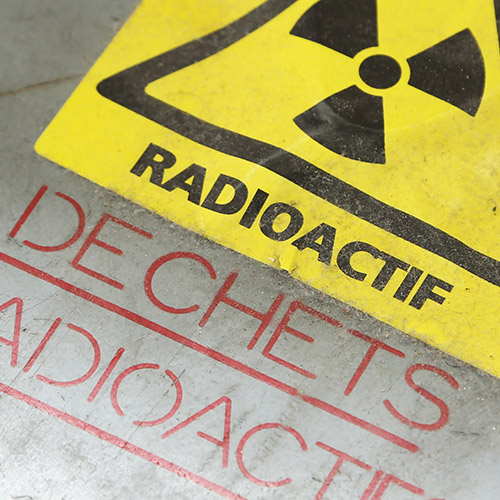Instrumentation and engineering at IPHC are based on a functional organization, which is essentially based on technical services and platforms.
Technical Services
The technical services have a scope of action that encompasses all the activities carried out at IPHC, and are intended to provide all the agents or groups of the institute with a specific service in terms of the technical skills required (electronics, IT, mechanics, radiation protection metrology, etc.). With a mode of operation based on project, the services support recurring activities (maintenance and renewal of equipment, regulatory monitoring), as well as innovation and technological development activities.
Platforms
The platforms hosted at IPHC offer high-level services and expertise to conduct cutting-edge research. The laboratory currently has six platforms, open to academic and industrial collaborations in its various fields of activity.

Accelerator Instrumentation Team
The mission of the Accelerator Instrumentation (EIA) team consists in designing and producing beam lines, spectrometers and splitters, beam diagnostic systems and associated developments in electronics, computing and automation for major projects of IN2P3 and CNRS. The skills of the six engineers making up the team are related to the following topics:
- The design and production of beam transport and handling equipment
- Beam dynamics, nuclear safety and radiation protection
- Realization and development of beam diagnostics
- Computing for process control and associated electronics
- Mechanics and maintenance of nuclear processes
- Integration of trades, solutions and equipment
Recently, the team participated in the start-up of SPIRAL2, a project for which it completely produced six emittance-meters controlled under EPICS as well as the command and control of various beam diagnostics (figure 1). The team also developed two beam lines (PRECy , CMS) at the CYRCé cyclotron.

Metrology and Instrumentation in Environmental Biology
The Metrology and Instrumentation in Environmental Biology (MIBE) team has the role of developing innovative instrumentation for monitoring the physiological and environmental data of wild animals. Composed of seven people, this team allows researchers to carry out research projects that cannot be undertaken under the same conditions with the pre-existing instrumental means. Created in September 2010, this service has worked on the design and development of three main registers of equipment:
- Miniature recorders of physiological and environmental data carried by wild animals (bio-loggers)
- Robots intended for the study of penguins in the Antarctic region (animatronics), in order to enter the residence and breeding areas without disturbing the animals
- RFID (radio frequency identification) reading equipment capable of reading at a short distance a passive electronic chip previously injected under the animal’s skin
An example of a result obtained in the juvenile king penguin using the equipment designed by this team is the demonstration of a phenomenon of physiological maturation during the first three months of life at sea and a transitional phase linked to post-moult weight loss.

Competent Service in Radiation Protection
The competent radiation protection department (SCR) carries out its missions in accordance with the regulatory requirements of labor, public health and environmental legislation as well as the requirements of the Nuclear Safety Authority (ASN) to enable:
- detention and use of a particle accelerator and X-ray generators,
- the manufacture of unsealed sources and their distribution in France, in the European Union and outside Europe
- their distribution in France, in the European Union and outside Europe
- possession and use of sealed and unsealed sources.
The expertise of the engineers in their various activities, such as safety, operational radiation protection, metrology of ionizing radiation, class 7 transport, regulatory and normative knowledge made it possible to obtain the ASN authorizations necessary for the IPHC activities.

Electronic Technical Service
The electronic technical service (STE) at IPHC is composed of more than 40 engineers who are involved in different fields of research, and whose activities cover all areas of electronics. The main activities are:
- Microelectronics and board development
- Assembly of printed circuits
- Micro-cabling and micro-connectors
- Assembly of detectors
- Acquisition system
- Microelectronics test and metrology
In particular, the service ensured the creation of a complete acquisition chain from the Front End casing (figure 3) to the 64-channel acquisition system, based on the MAROC 3 circuit for the international JUNO collaboration. In particular, it succeeded in doubling the frequency of use of the chip to allow a maximum acquisition rate of 50kHz and in modifying the reading system in order to allow the reporting of all events by TCP/IP or the addition of a trigger card to reduce the trigger rate. The entire system was developed and built, using the skills of routing, production and assembly of boards as well as software development available at IPHC.

Information Technology Service
This service, organized around the operations and the software development groups, coordinates the entire laboratory’s IT activities. Composed of 17 agents, it concentrates all the software expertise present in the laboratory and performs the tasks of administration of the information system (network and infrastructures, servers, software, security) for all the personnel at IPHC. The varied technical expertise present within this service makes it possible to provide a wide range of services for the benefit of its users, with a focus on the application of quality according to the ITIL framework.
The IT service is involved in regional and national professional networks, and has initiated several training courses. It actively participates in the InfoProx regional project coordinated by the University of Strasbourg and the CNRS. In order to facilitate the laboratory’s activity during the pandemic, the service has been particularly active by carrying out several projects simultaneously:
- The evolution of the network equipment (active and passive), in order to be able to benefit from the new bandwidth of the OSIRIS 4 metropolitan network. This point also allows us to be ready to participate in the challenging levels of the LHC upgrades.
- Renewal of the videoconferencing facilities in the meeting rooms and the amphitheater.
- Deployment and maintenance of collaborative tools
- Improvement of the cybersecurity practices.

Mechanical Technical Service
Involved in most of the laboratory’s projects and composed of 12 people divided between the mechanical workshop and the design office, the STM takes charge of complete high-tech projects in the framework of international collaborations, from the establishment of the initial specifications to the participation in the installation and development on site.
The IPHC maintains a constant effort of maintenance and development of machine tools, in order to have a recent infrastructure and production means. This approach progressively extends the competences of the STM. It is unanimously recognized operational knowledge in several fields, such as 3D printing, CAD/CAM and simulation.
Thus, the STM responds to the requests of the laboratory’s project teams and, since a few years now, make a significant contribution to the CMS trajectograph refurbishment project (CERN) and to the project for the evolution of the calibration means of the VIRGO gravitational wave interferometer (EGO).

Measurement and Acquisition Systems
The Measurement and Acquisition Systems (SMA) team’s mission is to develop instrumentation specific to nuclear and high energy physics experiments while providing technical support to experimental physicists, whether at IPHC or with other laboratories. Composed of nine engineers, it has developed expertise in the design and integration of measurement and data acquisition systems based on advanced electronic boards.
The team has distinguished itself by its participation in the production of DOMs (Digital Optical Module) for the international collaboration KM3NeT (Cubic Kilometer Neutrino Telescope), the European neutrino observatory project. The objective of this project is to deploy two underwater telescopes, which will consist of more than 6000 DOMs crisscrossing several cubic kilometers of water, in the Mediterranean Sea. A DOM is a very sensitive light detector, made up of 31 Photo Multiplier Tubes and processing electronics, which makes it possible to detect in water the traces of neutrinos coming from the cosmos. Figure 4 illustrates one of the DOMs produced at IPHC.

C4PI
The Competence Center for CMOS Sensors with Integrated Pixels (C4PI) is a platform composed of around twenty engineers and technicians, and whose main activity is the development of monolithic CMOS sensors with pixels (CPS), from the definition of the specifications and the design to the validation and the construction. The C4PI platform mainly works on medium and long-term projects in partnership with national and international collaborators. Labeled by IN2P3, it consists of two groups:
- Microtechnology, ensuring the integration, metrology and validation of hybrid electronic systems necessary for the development and production of detection elements.
- Microelectronics, specialized in the development of integrated pixel sensors in CMOS technology (or CPS for CMOS Pixel Sensors).
C4PI benefits from cutting-edge expertise in the development of CMOS sensors through innovative R&D carried out for many years at IPHC. Among the many achievements of C4Pi are the world’s first pixel CMOS sensor to have equipped a particle detector with this technology (the PXL of the STAR experiment in the USA), as well as the ultralight double-sided detection module PLUME, with which is built the BEAST detector for the BELLE2 experiment. C4PI was also involved in the design of the ALPIDE sensor and was one of the five construction sites of the resulting detector, the ITS2 of the ALICE experiment. ALPIDE is the current reference of pixel sensors for the detection of charged particles.
In 2020, C4PI has started an ambitious R&D program to create the discipline’s first giant, curved sensors, typically the size of an A4 sheet. This international project at CERN, in which C4PI, the only French group, plays a prominent role, will redefine the state of the art in the field. All the developments cited contribute to prefiguring the first detection layers of future e+e- colliders.

CYRCé
CYRCé is a scientific platform managed by a team of eight people. It incorporates a 25 MeV cyclotron with unique characteristics in Europe, making it possible to produce radioisotopes for nuclear imaging (18F, 64Cu, 89Zr, and soon 68Ga and 67Cu) and the production of labeled molecules for diagnosis, monitoring or medical treatment. The cyclotron is coupled to the PRECy experimental radiobiology line and the PET/CT X imaging system, as well as to a sensor test line for CMS (figure 5). The CYRCé platform is a unique place for the study of biological effects and their medium and long-term monitoring. The platform is organized around four main activities:
- The use of protons (for the production of isotopes or sample irradiation)
- The imaging platform
- The animal house
- Biology laboratories
The platform is labeled by IN2P3 and CORTECS, the network of the University of Strasbourg. The imaging platform also has the IBiSA label since 2019.
Website of the Platform: cyrce.fr

PAI
The inorganic analytical platform (PAI) offers unique know-how in the field of mineral analysis. Nine people participate in all the activities of this platform and allow:
- To identify and quantify almost all the elements of the periodic table
- To analyze chemical elements in all ranges of concentrations, up to ultra-traces
- To handle all types of samples (biological media, materials and nanomaterials, organometallic compounds, etc.)
It is open to all academic actors, as well as the socio-economic world at the regional, national or international level, for research collaborations as well as for specific analyses.

PSGE
The Strasbourg Grand Est Proteomics Platform offers a set of services related to proteomics relying on an experienced team of researchers and engineers. It is accessible through its service offering but also through the implementation of collaborative research projects for more complex requests. The services cover all routine analyzes related to the identification and quantification of proteins contained in complex biological samples. The platform’s expertise covers:
- Identification and quantification of proteins in complex proteomes (“shotgun” label-free or targeted proteomics)
- Bioinformatics analyzes of large proteomic datasets (including de novo sequencing for non-sequenced organisms)
- Identification of multiprotein complex partners
- Complete characterization of therapeutic proteins
- Detailed characterization of post-translational modifications
- Study of non-covalent interactions by mass spectrometry
The platform is ISO 9001 and NFX-50-900 certified (figure 6). It also has the IBiSA and the CORTECS labels, and is integrated in the Canceropôle Grand Est network.
Website of the Platform: plateforme-psge.u-strasbg.fr

ProFI
ProFI is a particular structure within IPHC. Created in 2012, this research infrastructure (RI) is now organized as a national research federation of the CNRS and CEA (FR2048 CNRS/CEA) including three sites (Grenoble, Toulouse and Strasbourg). Its R&D activities focus on the development of tools and methods for the structural and functional characterization of proteomes and protein-protein complexes. In addition to its R&D efforts, ProFI aims at offering the community high value-added proteomic analysis services carried out as part of collaborations or services. ProFI also participates in the dissemination of its expertise and tools within the scientific community through a strong investment in training and communication activities. At the regional level, it is involved in the BIGEst platform and therefore is a major actor of the local animation of the French Bioinformatics Institute network. At the national level, ProFI is involved in:
- The coordination actions towards the proteomic community (writing of a prospective document)
- The interactions with other INBS (Infrastructures Nationales Biologie et Santé) infrastructures.
At the international level, ProFI participates in large-scale projects (e.g. French partner of the international Human Proteome Project, figure 7) and in communication activities that contribute to France’s visibility in the global proteomic scientific community (e.g. ELIXIR).
ProFI interacts with other French national RIs in order to propose to the scientific community a pool of methods, technologies and software that can be used in biological or clinical projects. For example, ProFI is involved in two national projects aiming at delivering new bioinformatics tools for improved management of multi-omic datasets (ProMetIS) or integration of 3D structural data into interactomic datasets (Prote3DNet).
Website of the Platform: profiproteomics.fr

RAMSES
The Radiation Protection and Environmental Measurements (RaMsEs) platform offers services in the field of measurements and analyzes of radioactivity in laboratory and in situ. Its three engineers and technicians with high nuclear metrology skills are carrying out activities in the field of the environment and health. The activities of this service are represented by the following categories:
- Analyzes and expertise: measurements of low levels of radioactivity, on-site radiological expertise, development of multi-element analysis techniques (PIXE, XRF);
- Radiation protection and inspections: regulatory inspections of industrial facilities as part of ASN approvals;
- Radiological expertise on industrial sites.
As part of its participation in the IN2P3 Becquerel network, the RaMsEs platform, together with the Subatech laboratory in Nantes, carries out radioecological monitoring of nuclear power plants in the Loire. These measurements, carried out by in-situ gamma spectrometry, complement the measurements carried out in the laboratory on soil samples

SCIGNE
The SCIGNE platform is dedicated to the processing and management of massive scientific data. Created in 2007 to meet the computing resources required by the scientific experiments CMS and ALICE at CERN, it was opened in 2009 to users from other scientific disciplines, and in particular to the bio- and chemo-informatics communities. With a team of five engineers with complementary technical and scientific expertise, it offers a range of services (software development, training, drafting of data management plans, computing job workflow management, etc.) to meet challenges of Big Data and the implementation of open science policies. Accessible to regional, national and international scientific actors, whether from the public or private sector, it has been certified by IN2P3 in 2017 and by the CORTECS network of the University of Strasbourg in 2020. Its services are offered at the regional level in partnership with the mesocentre of the University of Strasbourg, nationally through its collaborations with the France Grilles and the French Institute of Bioinformatics (IFB) research infrastructures, and internationally through its involvement in EGI and in the BELLE II, ELIXIR, and LHC scientific collaborations.
This platform is recognized nationally and internationally for its expertise in Cloud Computing in the context of scientific research, whether through the establishment of virtual research environments, the training of engineers and researchers or developments of interoperable and distributed software. All of his achievements allow him to be involved in several European H2020 projects.
Website of the Platform: scigne.fr

M2IS – Isotopic Spectrometry
The M2IS platform is a scientific platform managed by a team of four people. It is specialized in the measurement and analysis of biomolecules labeled by stable isotopes. These analyses, particularly interesting in ecology, animal biology and human physiology, allow the quantification of numerous biological variables in free living conditions, as well as in the laboratory. The molecules used as tracers are thus exploited to study different metabolic (flux, turnover, oxidation of whole body and tissue substrates) and energetic (body composition, total energy expenditure, water flux) variables, and to explore numerous scientific hypotheses.
In order to be able to respond to the different demands, the team in charge of the platform develops new experimental methods, as well as the associated standards to guarantee the quality and reliability of the results.
The M2IS platform team manages the whole life cycle of the analyses, from the design and the realization of the experimental protocols, to the isotopic analysis and the interpretation of the results.
The platform is labeled CORTECS, the network of platforms of the University of Strasbourg.
